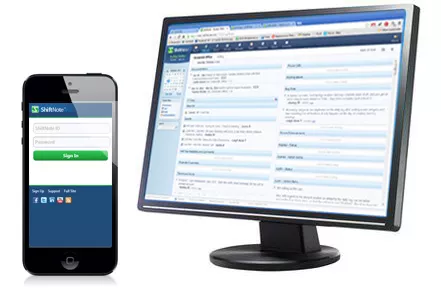

Employee Engagement Strategies that Work
Proven tips for restaurants, hotels, and any business that faces challenges with turnover.

Overview
Employee engagement isn't just a feel-good HR metric — it’s a bottom-line business strategy, especially for industries like restaurants, hotels, manufacturing, and healthcare which see a lot of turnover.
When employees are engaged, they’re more reliable, productive, and customer-focused. When they’re not? You see it in missed shifts, poor communication, high turnover, and ultimately, your business' bottom line.
In this guide, we’ll walk you through seven powerful employee engagement strategies that work, with practical ideas you can implement today. Whether you manage a late-night kitchen crew, a rotating housekeeping team, or a warehouse staff, these tactics will help you boost morale, reduce turnover, and create a team that wants to show up and succeed.
We’ll also show how tools like ShiftNote can simplify communication and increase team accountability across shifts.
Learn More about ShiftNote +Scheduler
The Link Between Employee Engagement and Turnover
Let’s be real — you can’t talk about employee engagement without talking about turnover.
In shift-based industries, turnover isn’t just a headache — it’s a business threat. When engagement drops, people leave. And every time they do, you're losing time, money, and momentum.
Here are four ways poor engagement drives up turnover:
-
Lack of Recognition
When employees feel invisible, they check out. Recognition keeps your best people invested and motivated.
-
Inconsistent Communication
Missed updates between shifts lead to frustration, mistakes, and managers who feel like they’re always cleaning up someone else’s mess.
-
Rigid Scheduling
Life happens — when employees feel like they have no control over their time, they look elsewhere for jobs that offer more balance.
-
No Clear Growth Path
If your team doesn’t see opportunities to advance, they’ll move on — especially in industries where word spreads fast about better opportunities.
According to SHRM, replacing just one hourly worker can cost nearly $5,000. For managers, it’s even higher.
The good news? Engagement is your best retention strategy. Keep your team in the loop, recognize their work, and give them a voice — and you’ll see them stick around longer, perform better, and bring others with them.


Employee Engagement Strategies
1. Recognize and Reward in Real Time
Recognition is one of the most effective and most overlooked ways to boost engagement, especially in fast-paced shift environments.
When team members are recognized for their hard work, they are more likely to stay motivated and show up ready to contribute. In restaurants and hotels, where shifts can be unpredictable, real-time appreciation goes a long way.
Try This:
- Give shoutouts during pre-shift huddles or via digital logbooks like ShiftNote.
- Use a rotating “Employee of the Shift” reward with small perks like a free meal, preferred shift selection, or public recognition.
- Let peers nominate each other. It builds camaraderie and spreads the good vibes.
2. Use Scheduling as a Tool for Engagement
Engagement starts with respecting your team’s time. Using scheduling software that supports flexibility, shift swaps, and advance notice makes employees feel valued and reduces burnout.
Restaurant Example: A line cook juggling two jobs will appreciate early access to the schedule and tools to swap shifts without manager micromanagement.
Hotel Example: Housekeeping teams with rotating weekends off will appreciate predictability and fairness.
Make It Easier: Tools like ShiftForce’s employee scheduling platform help managers build efficient, fair, and flexible schedules in minutes.
3. Centralize Communication Between Shifts
Miscommunication between shifts leads to missed tasks, frustrated employees, and even safety issues.
Imagine a bar manager who preps for a supplier delivery that was actually delayed, all because the AM manager did not leave a clear note.
Shift-based teams thrive when information flows freely and clearly.
What Works:
- - A digital logbook like ShiftNote helps keep everyone in the loop.
- - Share updates on goals, incidents, VIP guests, or anything that helps the next shift succeed.
- - Keep it accessible from mobile so teams can prep for the day before walking in the door.
Pro Tip: ShiftNote’s read-receipt feature helps you track who is actually reading the updates, making accountability part of the routine.
4. Give Employees a Voice in Daily Operations
Engaged employees do not just clock in. They contribute ideas.
Invite frontline team members to share their opinions on operations, customer feedback, or even menu items. This creates a sense of ownership and pride.
- - Let housekeeping staff suggest layout improvements to increase speed.
- - Allow line cooks to give input on new specials or kitchen layout changes.
- - Ask the front desk team for guest feedback themes they are hearing often.
Even simple changes based on employee ideas can transform your culture and improve retention.
5. Build Daily Rituals That Reinforce Culture
Culture is not built in quarterly meetings. It is built every day, shift to shift.
- Create daily rituals that reinforce your company’s values and keep teams aligned.
- Quick team huddles before each shift to set goals and highlight wins.
- Use your logbook to remind teams of weekly focuses such as upsell targets, safety tips, or customer service goals.
- Celebrate birthdays, anniversaries, or work milestones right on the floor.
Tip: Want to track how your team is doing on key cultural metrics? Start a simple “shift score” log to track energy levels, team wins, and customer feedback over time.
6. Train for Growth, Not Just for the Job
Employees stay where they see opportunity.
Make professional development a part of your shift culture, even in high-turnover industries.
- - Cross-train team members in different roles such as host, server, or cook.
- - Offer quick micro-trainings during slow periods or team meetings.
- - Promote internally and highlight success stories of team members who moved up. This shows your team they're not just filling a role. They're part of your long-term success.
7. Track Engagement and Adjust Regularly
If you are not measuring engagement, you are just guessing.
Use team feedback, turnover data, and tools like ShiftNote to identify red flags early. Look for signs like disengaged employees, poor shift transitions, or breakdowns in communication.
Set a cadence:
- - Check in monthly on morale and scheduling satisfaction.
- - Review logbook entries for patterns in missed communication or repeated issues.
- - Track time-off trends, missed shifts, and other indicators of disengagement.
Also Read: Reducing Employee Turnover in Restaurants. Disengagement and turnover often go hand in hand.

Employee Engagement Best Practices for Specific Industries
Restaurants: Focus on flexibility, feedback, and fun
Restaurant teams thrive on fast-moving feedback and opportunities to feel appreciated in the moment. With high turnover and rapid pace, engagement efforts need to be baked into daily operations — not left for quarterly meetings.
Calling out a job well done during pre-shift meetings, letting team members weigh in on specials or service ideas, and offering flexible scheduling options are all ways to keep people connected to the work. Digital tools like ShiftNote help managers close the loop shift-to-shift, so nobody feels left in the dark.

Hotels: Lead with consistency and connection
Engagement in hotels often comes down to consistent communication and recognition across departments and shifts. A guest’s experience may start with valet, continue through check-in, and end with housekeeping — and every touchpoint matters. That’s why reinforcing team connection is critical.
Hotel operators can boost engagement by sharing positive guest feedback regularly, ensuring fair rotation across shifts, and offering internal advancement opportunities in both front and back-of-house roles. The more connected teams feel to the guest experience, the more ownership they take in it.

Manufacturing: Prioritize structure, safety, and communication
Manufacturing teams tend to be highly process-driven, and employee engagement hinges on whether workers feel seen, safe, and heard. Daily team huddles at the start of each shift are a great way to reinforce goals, safety messages, and top performers.
When employees know they have a voice in how things run — whether through continuous improvement suggestions or feedback loops — engagement rises. Digital shift logs help ensure that vital updates don’t fall through the cracks during shift transitions, especially in 24-hour operations.

How ShiftNote
Makes Employee Engagement Easier
ShiftNote makes it easy to engage your team with tools designed specifically for shift-based workplaces. From digital shift notes to real-time communication and flexible scheduling, ShiftNote helps you:
- Boost engagement through clear, consistent communication
- Empower employees with self-service scheduling options
- Reduce frustration and burnout with predictable, fair shift planning
Final Thoughts for Shift Managers
Employee engagement doesn’t happen once a year — it happens every shift.
Whether you're running a busy hotel front desk, managing a kitchen crew, or scheduling a rotating team of technicians, these strategies can help you boost morale, improve communication, and lower turnover.
It all starts with daily habits, clear communication, and a shared sense of purpose.
Want to make that easier?
Try ShiftNote free and see how our scheduling, communication, and shift-planning tools can help your team feel more connected and engaged — every shift, every day.
What managers are saying about ShiftNote and ShiftForce
Testimonials provided by people currently using ShiftNote who joined our Champions program which includes a gift card reward.
Latest Posts from Our Blog
Looking for some quick tips? Read our blog with industry-specific tips and guides to make managing easier.
How Do I Write Effective Shift Notes?
5 Ways to Use Shift Notes to Boost Team Accountability
Need help reducing turnover?
Download the guide with 50 unique ideas to show employee appreciation year round.
Download the Guide



